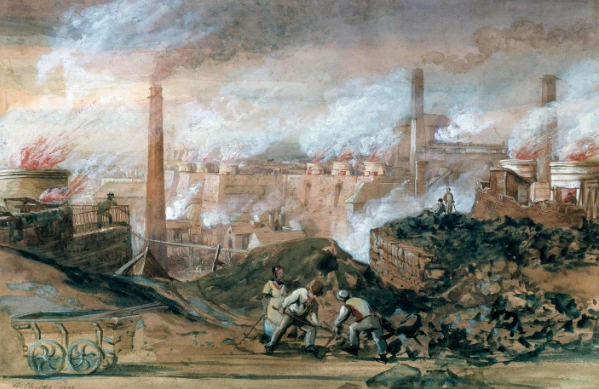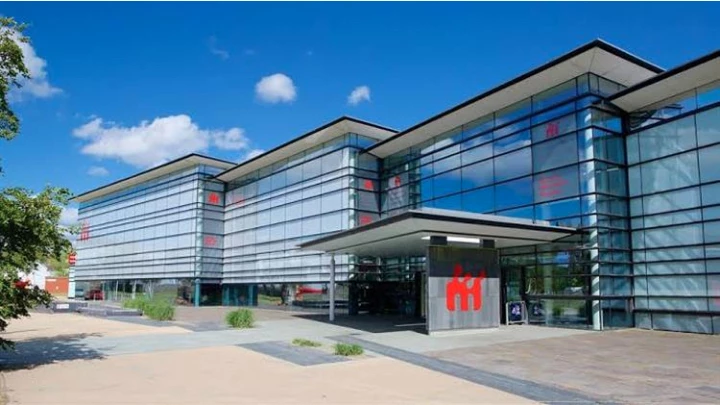Coal and Climate
, 15 May 2020
While Wales is working hard to drive forward a positive climate agenda, with a target of 100% renewable electricity by 2035, our industrial past casts a long environmental shadow. Here Jennifer Protheroe-Jones, Principal Curator – Industry looks at our industrial history and its impact.
Wales was an early and unwitting contributor to climate change.
The 1851 Census showed that Wales was the first nation to have more people employed in industry than in agriculture, the important switch having probably occurred in the mid to late 1840s.
Wales was a notable international centre of industry in the mid 19th century, being one of the most important iron producing nations, and the centre of both the world copper and tinplate industries. Plentiful easily worked coal underpinned all these industries – to fuel furnaces, to power steam engines that drove machinery and locomotives that hauled raw materials and finished products.
An ocean of railway wagons loaded with coal in sidings adjacent to Roath Dock, Cardiff, awaiting shipment in March 1927. The initials on the wagons identify a range of major colliery companies: Burnyeat, Brown & Co Ltd; D.Davis & Sons Ltd; Nixon’s Navigation Coal Co Ltd; United National Collieries Ltd.
A few decades later, exports of Welsh coal would outstrip the large amounts being used by industries within Wales. By the start of the twentieth century, south Wales was the most important coal exporting coalfield in the world, supplying diverse countries with steam coal. In energy terms, the Bristol Channel was at this time the equivalent of the Persian Gulf a hundred years later. If high quality fuel capable of powering the widest range of machinery was required, then the coal-exporting ports of south Wales were key places to obtain it.
Aerial view looking south east over Cardiff (East Moors) Steel Works around 1960.
The burning of coal, oil and natural gas releases carbon dioxide and other greenhouse gasses that cause climate change. Internationally, today the largest uses of coal are in electricity generation, cement manufacture and in steel making. Coal ceased to be used to generate electricity in Wales in March 2020; coal continues to be used in the steel and cement industries.
Tipping a railway wagon of coal at Cardiff Docks, early 20th century. Some coals tended to break up so, instead of tipping the wagons directly into ships’ holds from a considerable height, the coal was tipped into a Lewis Hunter patent ‘coaling box’ (just visible below the copious coal dust) which was picked up by the dockside crane on the left and lowered into the ship’s hold, minimising the height that the coal was dropped.
The complex web of communications that enabled Welsh coal to be traded internationally is explained in the Coal gallery at the National Waterfront Museum at Swansea.































